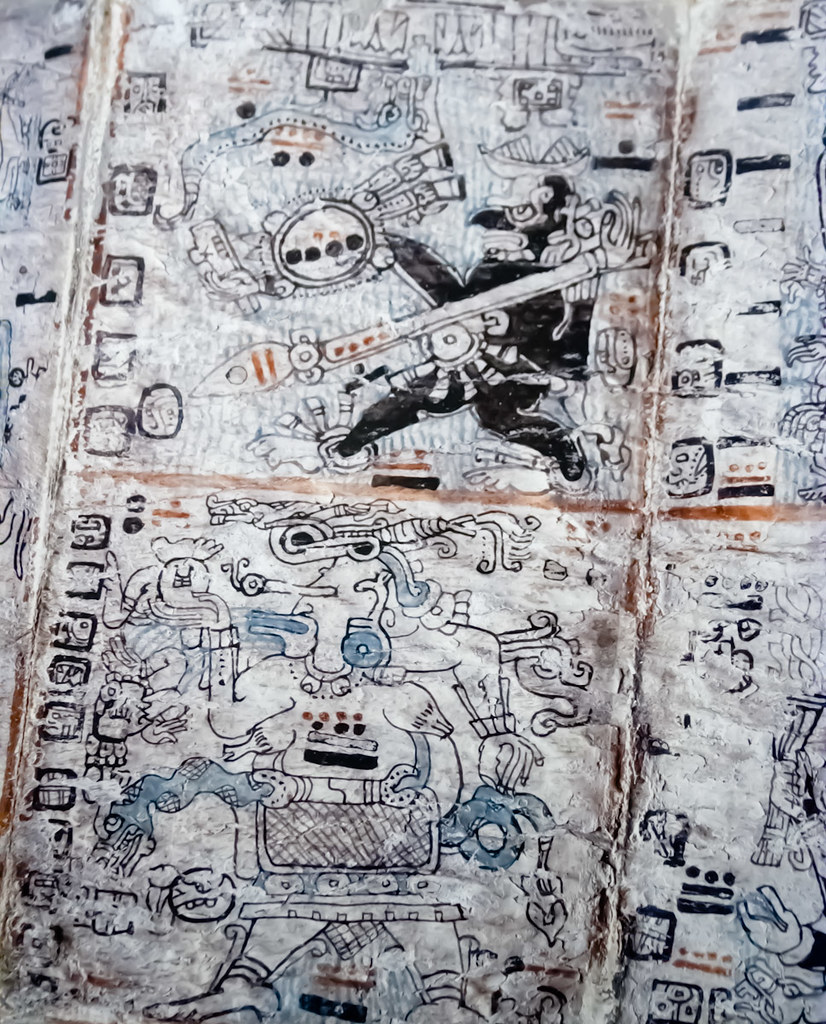
The codex is the predecessor to what we would all recognize as a modern book. It replaced the scroll in ancient times as the main source of information storage. The movement from scroll to codex to book was fairly natural and intuitive as each new technology used the same materials as the previous, only improved production, usage and accessibility.
One of the biggest improvements the codex offered over the scroll is its ability to allow “random access”. This means you can open up the codex to any point or page and begin reading. Scrolls did not allow random access and forced readers to begin at the point where the scroll was last rolled up to, usually the start (Dykes). To find information the whole scroll had to be unrolled and then gone over. Codices also took up much less room than scrolls, which in addition to being slow to use were bulky and delicate. The codex eliminated this tedious process and made information easily and quickly accessible (Dykes).
A codex is usually made of thicker material than the paper of a modern book. Usually papyrus, vellum or an earlier paper would be used depending on what era the codex was made in. Several styles of codex exist and have been found all over the world. Most had pages that face each other just like a book and most codices featured a spine. Some codices, usually the earlier ones, folded out accordion style or featured panels like the one pictured above (Frost). While not as easy to use or read as a codex with a spine, these fold-able manuscripts still were a massive improvement over scrolls and still allowed for random access.
The exact time that the modern book replaced the codex is a fuzzy area as technically a paper-back book is still a codex. Some definitions of a codex require the text to be handwritten still (manuscript), I like that definition and think its the easiest to understand when comparing codices to modern books. Sometime around the beginnings of the first printers and thinner paper, the codex was fazed out and replaced by the modern style book. (Norman)
Consistent with the time in which they were developed, many of the first codices contained religious information. Various cultural renditions of the bible have been historically preserved in codices and have proved useful for historical and academic studies. (Frost) Religious groups were quick to adopt codices because of their convenience, portability and versatility. Illustrations and text were both able to be added to pages and easily shown to audiences or congregations and the ease-of-use allowed for the codices to be easily handled or distributed. Right around the same time the codex was invented, Christianity began to spread across the middle east. The new religion adopted the codex in the form of its bible and is largely responsible for transporting the codex along with the knowledge regarding how to produce them across their region (Dykes).
Sources:
Frost, Gary . “Adoption of the Codex Book: Parable of a New Reading Mode.” [CoOL]. N.p., 3 Aug. 2003. Web. 23 Feb. 2017. http://cool.conservation-us.org/coolaic/sg/bpg/annual/v17/bp17-10.html
Dykes, Victoria. “From Scroll to Codex: A Religious and Practical Transition (Victoria Dykes ’13) – From Tablet to Tablet: A History of the Book.” Google Sites. N.p., 2013. Web. 23 Feb. 2017. https://sites.google.com/a/umich.edu/from-tablet-to-tablet/final-projects/-victoria-dykes-13
Norman, Jeremy. “The Transition from the Roll to the Codex: Technological and Cultural Implications.” The Transition from the Roll to the Codex: Technological and Cultural Implications. N.p., n.d. Web. 23 Feb. 2017. http://www.historyofinformation.com/narrative/roll-to-codex.php
Image:
Tilford, Charles. Mayan Dresden Codex. 2012. Flickr. Web. 23 Feb. 2017.
